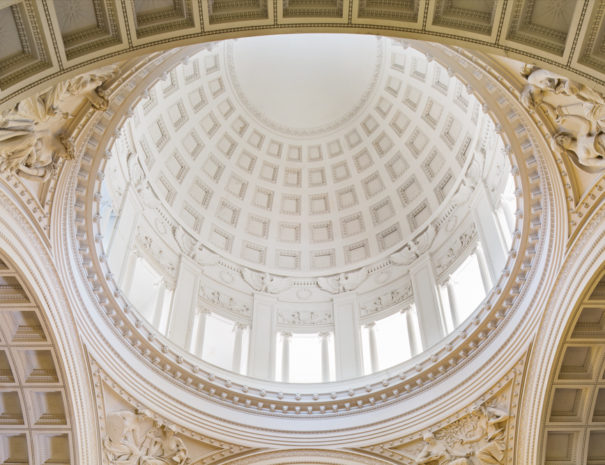
New York City may be famous for its skyscrapers, but it’s the Beaux-Arts buildings erected during the Gilded Age that transformed the city into the exciting metropolis it is today. This period after the Civil War was characterized by unprecedented growth and modernization, with industrial tycoons amassing huge fortunes that they used not only for their own benefit but also to beautify the city — namely by constructing the kinds of Beaux-Arts buildings that existed in Europe. Architects like Richard Morris Hunt and Charles Follen McKim trained at the École des Beaux-Arts in Paris and used European architecture as inspiration for the grand museums, libraries, bank buildings, monuments, and residences commissioned by wealthy patrons like the Astors, the Vanderbilts, and the Carnegies.
“On returning from Paris, Hunt, McKim, and the others were tasked with forging a new architectural identity for the flourishing nation, and for its leading city. The street was their canvas, and the Beaux-Arts style their brush, as they transformed New York from a provincial city of mediocrity into an international metropolis of awe and wonder,” Phillip James Dodd writes in the introduction to An American Renaissance: Beaux-Arts Architecture in New York City. Published by Images Publishing, the new tome offers an in depth look at 20 of New York’s most incredible Beaux-Arts buildings and the stories behind them.
We’ve chosen ten gorgeous Beaux-Arts buildings in New York City that every architecture fan should see at least once in their life. To learn more about the book and Beaux-Arts architecture in New York, join us for a virtual book talk with Phillip James Dodd on January 12, 2022 at 12 p.m. This event is free for Untapped New York Insiders. If you’re not a member, join now (and use the code JOINUS to get your first month free).
1. New York Public Library

Undoubtedly one of New York City’s most recognizable Beaux-Arts buildings, the New York Public Library’s main branch at 42nd Street and Fifth Avenue was designed by Carrère & Hastings, a firm that was just beginning to gain acclaim when it won the design competition. Amazingly, the firm’s founders John Merven Carrère and Thomas Hastings beat out their old bosses at McKim, Mead & White for the commission.
Their insistence on using gleaming white Vermont marble blew the budget up from $2.5 million to $9 million and due to their exacting standards, the library took nine years to build. They drew inspiration from Roman triumphal arches, the Opéra de Paris, and Hôtel de la Marine on Place de la Concorde in Paris and borrowed elements like fret moldings and rosettes from ancient Greek architecture. As Dodds writes, “this building comes closer than any other in America to the complete realization of Beaux-Arts design at its best.”






